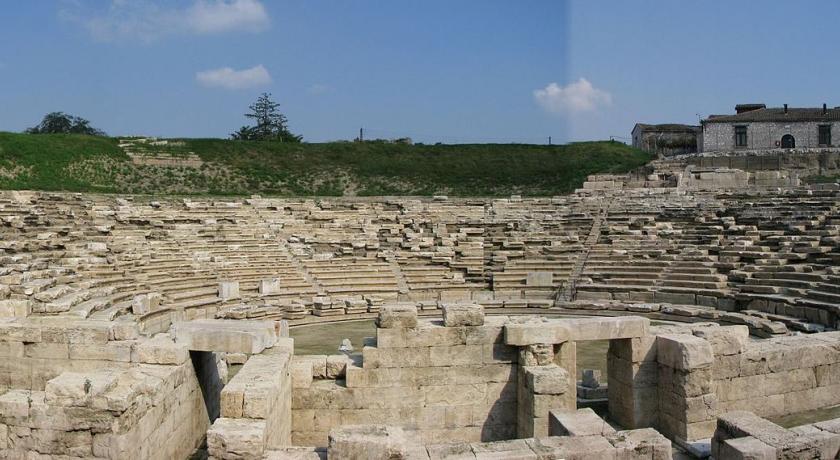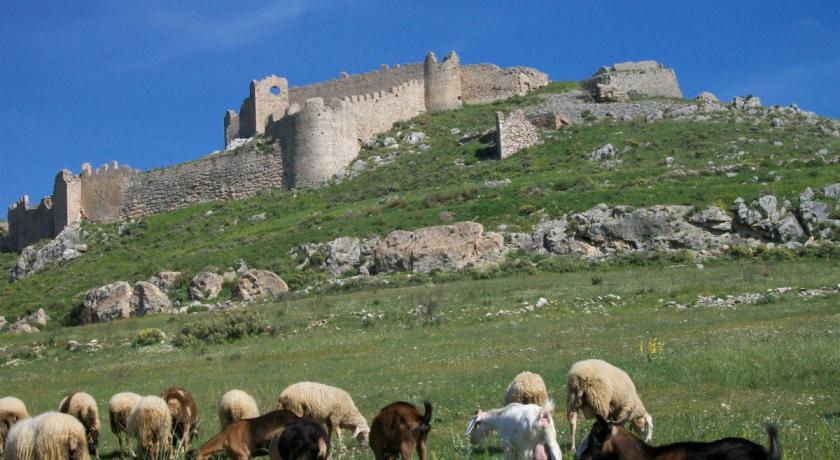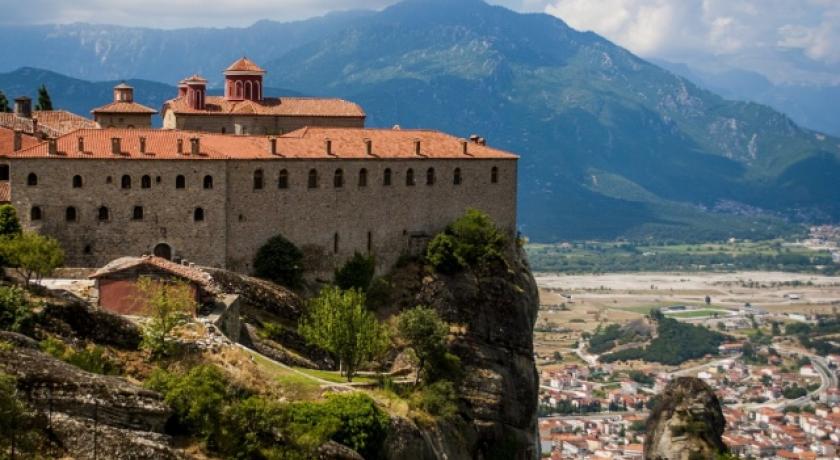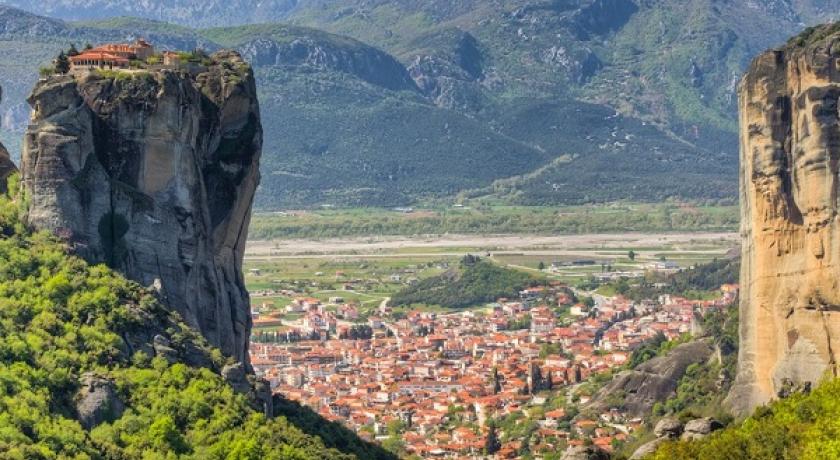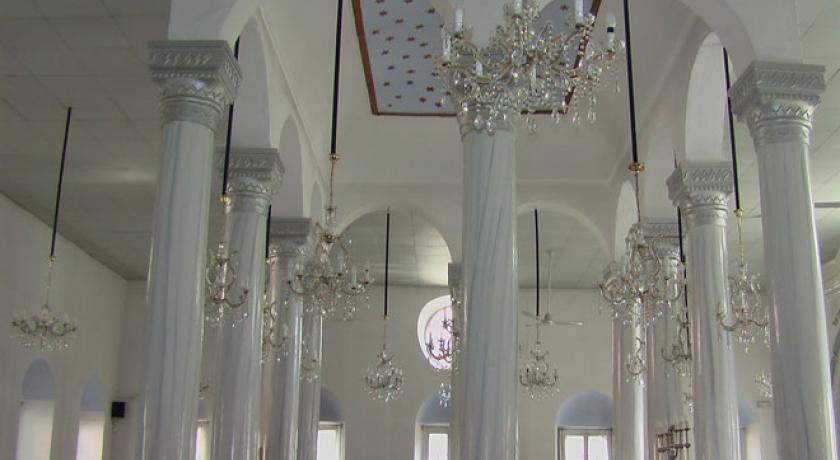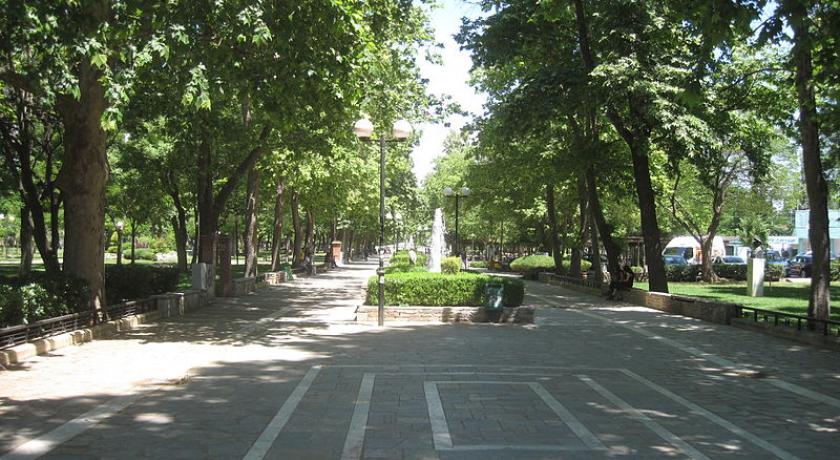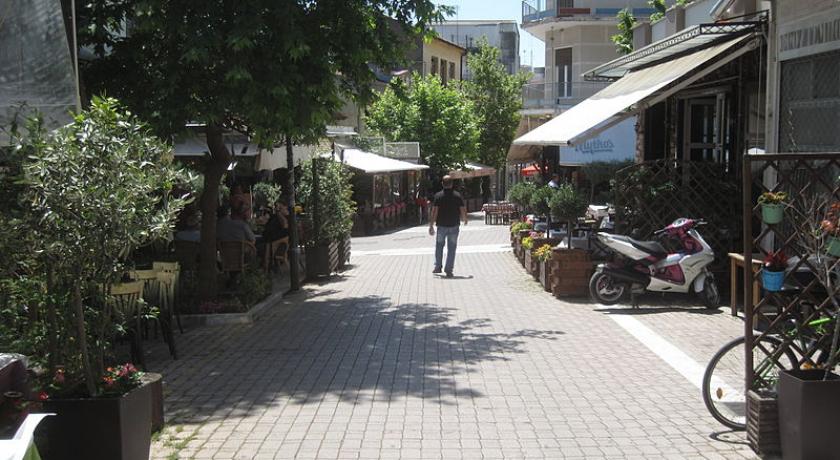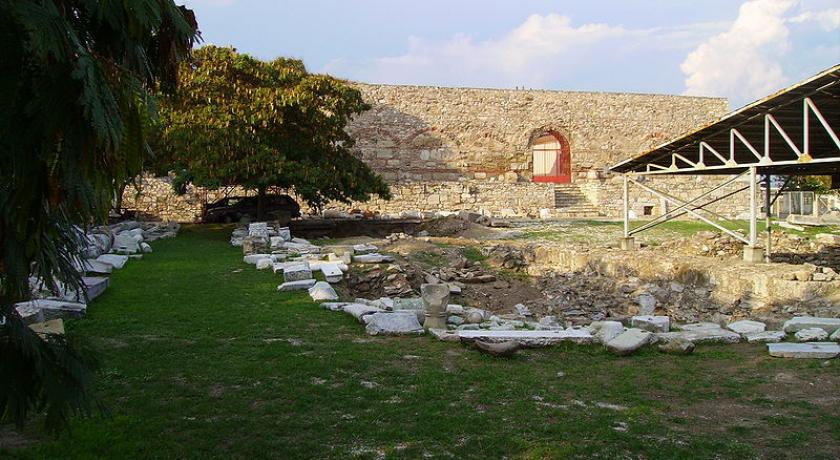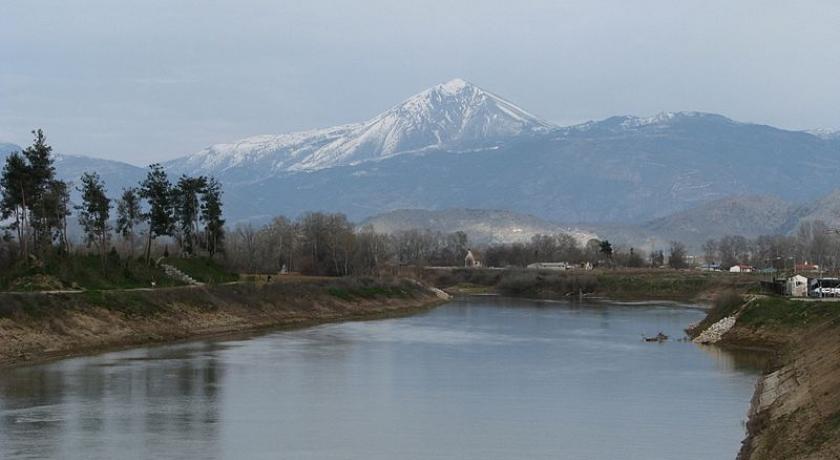Description
Larissa (Greek: Λάρισα [ˈlarisa]) is the capital and largest city of the Thessaly region, the fifth most populous in Greece and capital of the Larissa regional unit. It is a principal agricultural centre and a national transportation hub, linked by road and rail with the port of Volos, the cities of Thessaloniki and Athens. Larissa, within its municipality, has 162,591 inhabitants, while the regional unit of Larissa reached a population of 284,325 (in 2011). The urban area of the city, although mostly contained within the Larissa municipality, also includes the communities of Giannouli, Platykampos, Nikaia, Terpsithea and several other suburban settlements, bringing the wider urban area population of the city to about 174,012 inhabitants and extends over an area of 572.3 km2 (221.0 sq mi). Legend has it that Achilles was born here. Hippocrates, the Father of Medicine, died here. Today, Larissa is a major commercial and industrial centre in Greece.
Culture
- Municipal Odeon of Larissa
- Mylos of Pappa Theatre
- Thessalian Theatre – Municipal Theatre of Larissa
Archaeological sites
- Ancient Theatre A'
- Fortress Hill
- Ancient Theatre B'
- Hippokrates Monument
Cuisine
Local specialities:
- Batzina
- Kelaidi (Κελαηδί)
- Kreatopita
- Loukanikopita
- Melintzanopita
- Tyropita
Museums
- Diachronic Museum of Larissa
- Municipal Gallery of Larissa – G.I. Katsigras Museum
- Historical & Folklore Museum of Larissa
- Veterinary Military Museum of Larissa
- Museum of Folklore Society of Larissa
Transport
Larissa sits in the middle of the plain of Thessaly, with connections to Motorway A1 and national roads EO3 and EO6.
- Larissa's Urban Bus System
- Larissa's Interurban System
- Larissa Central Railway Station at
 39°37′46″N 22°25′22.2″E
39°37′46″N 22°25′22.2″E - Mezourlo Freight Railway station at
 39°37′08″N 22°24′30″E
39°37′08″N 22°24′30″E - Larissa Airport
- Larissa Tram (planned)
Close Destinations
The city is in close proximity of many interesting destinations in the region (mount Olympus, mount Kissavos, Meteora, Lake Plastira, Pilio, etc.) suitable for daily trips.
Geography
There are a number of highways including E75 and the main railway from Athens to Thessaloniki (Salonika) crossing through Thessaly. The region is directly linked to the rest of Europe through the International Airport of Central Greece located in Nea Anchialos a short distance from Larissa. Larissa lies on the river Pineios.
The municipality Larissa has an area of 335.98 km2, the municipal unit Larissa has an area of 122.586 km2, and the community Larissa has an area of 88.167 km2.
The Larissa Chasma, a deep gash in the surface of Dione, a natural satellite of Saturn, was named after Larissa.
Climate
The climate of Larissa is transitional. The winter is cold and wet, and some snowstorms may occur. The summer is hot, and temperatures of 40 °C (104 °F) may occur. Thunderstorms or heavy rain may cause agricultural damage. Larissa receives 450 mm (18 in) of rain per year.
Mythology
According to Greek mythology it is said that the city was founded by Acrisius, who was killed accidentally by his grandson, Perseus. There lived Peleus, the hero beloved by the gods, and his son Achilles.
In mythology, the nymph Larissa was a daughter of the primordial man Pelasgus.
The city of Larissa is mentioned in Book II of Iliad by Homer:
Hippothous led the tribes of Pelasgian spearsmen, who dwelt in fertile Larissa- Hippothous,and Pylaeus of the race of Mars, two sons of the Pelasgian Lethus, son of Teutamus.
In this paragraph, Homer shows that the Pelasgians, Trojan allies, used to live in the city of Larissa. It is likely that this city of Larissa was different to the city that was the birthplace of Achilles. The Larissa that features as a Trojan ally in the Iliad was likely to be located in the Troad, on the other side of the Aegean Sea.
History
Middle Ages and Ottoman period
Larissa was sacked by the Ostrogoths in the late 5th century, and rebuilt under the Byzantine emperor Justinian I.
In the 8th century, the city became the metropolis of the theme of Hellas. The city was captured in 986 by Tsar Samuel of Bulgaria, who carried off the relics of its patron saint, Saint Achilleios, to Prespa.[12] It was again unsuccessfully besieged by the Normans under Bohemond I in 1082/3.
After the Fourth Crusade, the King of Thessalonica, Boniface of Montferrat, gave the city to Lombard barons, but they launched a rebellion in 1209 that had to be subdued by the Latin Emperor Henry of Flanders himself. The city was recovered by Epirus soon after.
It was conquered by the Ottoman Empire in 1386/87 and again in the 1390s, but only came under permanent Ottoman control in 1423, by Turahan Bey. Under Ottoman rule, the city was known as Yeni-şehir i-Fenari, "new citadel". As the chief town and military base of Ottoman Thessaly, Larissa was a predominantly Muslim city. The town was noted for its trade fair in the 17th and 18th centuries, while the seat of the pasha of Thessaly was also transferred there in 1770. The city remained in Ottoman hands until Thessaly became part of the independent Greek kingdom in 1881, except for a period where Ottoman forces re-occupied it during the Greco-Turkish War of 1897.
During Turkish occupation the administration of the Bishopric of Larisa was transferred to nearby Trikala where it remained for several centuries.
By the end of the fourteenth century, Larisa had become a Turkish town in which the inhabitants were exclusively Muslims. The town remained so until the 1730s when Metropolitan Iakovos II returned the see from Trikala to Larisa with the establishment in 1734 of the present day Metropolis of Larisa and Tyrnavos.
In the 19th century, there was a small village in the outskirts of town very unusually inhabited by Africans from the Sudan, a curious remnant of the forces collected by Ali Pasha. In the 19th century, the town produced leather, cotton, silk and tobacco. Fevers and agues were prevalent owing to bad drainage and the overflowing of the river; and the death-rate was higher than the birth rate.[dubious – discuss] It was also renowned for the minarets of its mosques (four of which were still in use in the early part of the 20th century) and the Muslim burial grounds.
Modern Greek era
Larissa was the headquarters of Hursid Pasha during the Greek War of Independence. In 1881, the city, along with the rest of Thessaly, was incorporated into the Kingdom of Greece. A considerable portion of the Turkish population emigrated into the Ottoman Empire at that point. During the Greco-Turkish War of 1897, the city was the headquarters of Greek Crown Prince Constantine. The flight of the Greek army from here to Farsala took place on April 23, 1897. Turkish troops entered the city two days later. After a treaty for peace was signed, they withdrew and Larissa remained permanently in Greece. This was followed by a further exodus of Turks in 1898.
Ecclesiastical history
Christianity penetrated early to Larissa, though its first bishop is recorded only in 325 at the Council of Nicaea. St. Achillius of the 4th century, is celebrated for his miracles. Lequien cites twenty-nine bishops from the fourth to the 18th centuries; the most famous is Jeremias II, who occupied the see until 733, when the Emperor Leo III the Isaurian transferred it from the jurisdiction of the Pope of Rome to the Patriarchate of Constantinople. In the first years of the 10th century it had ten suffragan sees; subsequently the number increased and about the year 1175 under the Emperor Manuel I Comnenus, it reached twenty-eight. At the close of the 15th century, under the Turkish domination, there were only ten suffragan sees, which gradually grew less and finally disappeared.
Larissa is an Orthodox Metropolis of the Church of Greece. It was briefly a Latin archbishopric in the early 13th century, and remains a Latin Metropolitan (top-ranking) titular see of the Roman Catholic Church, which must not be confused with the Latin episcopal (low-ranking) titular see Larissa in Syria.
Larissa Nowadays
Today Larissa is the fifth largest Greek city with many squares, taverns and cafes. It has three public hospitals with one being military hospital. It hosts the Hellenic Air Force Headquarters and NATO Headquarters in Greece. It has a School of Medicine and the School of Biochemistry – Biotechnology the third largest in the country Institute of Technology. It occupies the first place among Greek cities into green coverage rate per sq.m. urban space. It also has two public libraries and three museums.
Address
Larissa
Greece
Lat: 39.639022827 - Lng: 22.419124603


